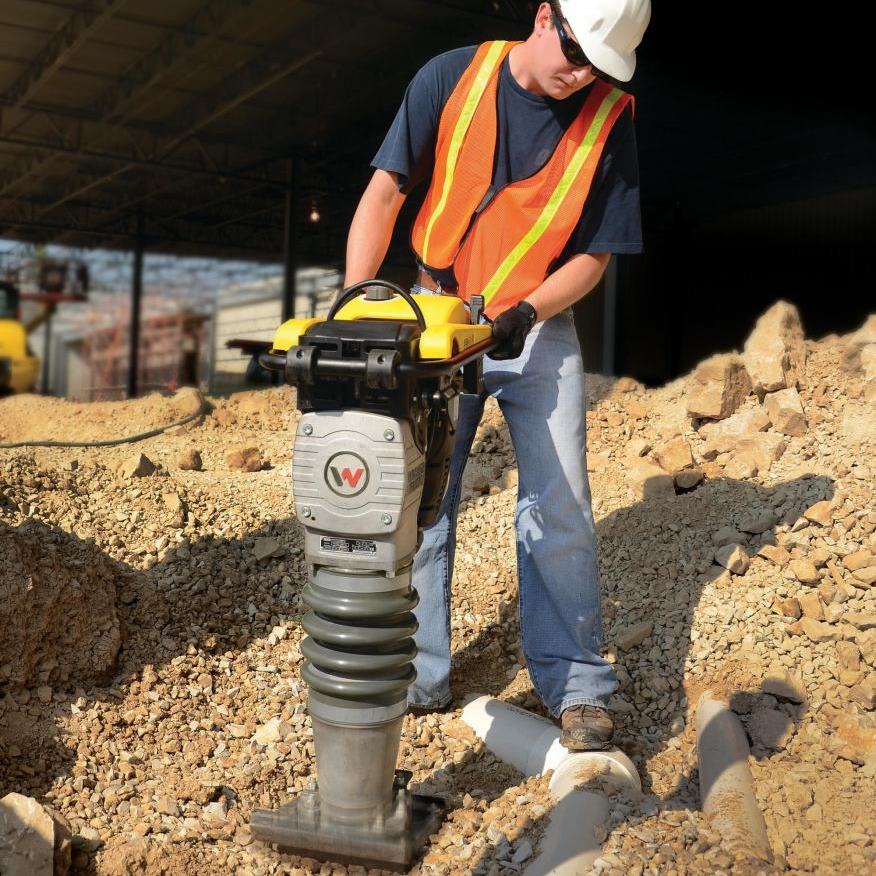The Importance of Ground Compaction
[dropcap]P[/dropcap]roper ground compaction is an absolute necessity for most types of construction projects as the process gives the ground (often the building base) greater stability and a higher level of resistance. It can also be important to produce a flat base which can be essential for roads, various foundations for construction, areas being prepped for paving and even for the humble garden shed slab. Compaction is simply a process by which the air is removed from the soil particles, usually by applying downward pressure to the soil and this can be achieved with the use of various types of compaction equipment.
Take the Leaning Tower Of Pisa in Italy as an example of what happens without proper ground compaction.
Soil Particles
Usually soil particles are divided into two main categories: cohesive and non-cohesive. Particles in cohesive soil bond to one another (for example a clay based soil), whilst on the other hand, those in non-cohesive soil (i.e. Sand) simply lie on top of each other without bonding. Before taking on any compaction project, it is vital to discover the type of soil that you will be working with in order to ensure that you achieve the required foundation. This may involve excavating non-cohesive soil and bringing in some material which is suitable for compaction.
Being satisfied with your material for compaction, you will need to use good quality compaction equipment and this will vary depending on the size of the area and depth of material being compacted.
Intended Compaction
Compaction can be either intended through the use of compaction equipment, or unintended which is the result of incidental activity such as walking or driving over ground. Intended compaction is done through the use of tools such as upright rammers, hand rammers, vibrating rollers, vibratory plate compactors, or in the case of laying new turf, lawn rollers. This type of compaction equipment is used to achieve ground stability and to ensure that there is enough resistance to begin work on top of it.
When selecting equipment for use with soil compaction, there are a number of things which should be taken into consideration, such as the size of the area, the amount of soil, and other soil characteristics and properties.
As a rough guide:
- A 140Kg Plate Compactor is suitable for small to medium sized areas which need to support the weight of vehicles when complete such as driveways or garages.
- An 80Kg Plate Compactor is suitable for compacting small to medium areas that will carry pedestrian traffic such as paved walkways & outdoor areas, even water tank pads.
- A 60Kg Plate Compactor is also suitable for compacting areas that carry pedestrian traffic, however the reduced width of the machine makes it most suitable for tight spots such as small or narrow outdoor areas. It can also be used in trench footings.
- An Upright Rammer is the perfect machine for compacting backfill in footings, trenches and other narrow excavations.
- If your soil compaction project is in a spot where the other machinery won’t fix, the Hand Rammer is your best option.
- Used when laying new turf or grass seed, a Lawn Roller is an essential step to even the soil and then press the new grass into the soil to achieve maximum contact between the grass roots and the ground.
Risks of Not Compacting Soil
When it comes to construction, there are a number of risks involved when the soil is not properly compacted and prepared. Failure to remove the air between soil particles can lead to huge problems down the line, including unexpected and unwanted movement or subsidence of the ground. This can lead to the walls of the building or structure cracking or even falling down. For construction types like roads, pavements, driveways and paving this can cause cracks, uneven surfaces, water pooling and can even cause holes to develop.
Hire the Right Tools for the Job
In order to complete your job successfully, it’s really important that you use professional-grade equipment such as the items listed above which are all available from Centenary Hire.
If you hire from Centenary Hire, the team on the Hire Desk are available to answer your questions and ensure you have all the information you need to select the correct equipment. Once you have the right equipment, all that’s left to do is follow the instructions and use some good old fashioned elbow grease.
DO YOU WANT TO USE THIS ARTICLE IN YOUR NEWSLETTER OR WEBSITE? You can, as long as you include the following text in its entirety:
Centenary Hire is a Tradesmen & Weekend Warrior’s best friend. Our ever increasing range of hire equipment consists of modern tools, machinery, scaffold, access equipment and site services all of which are aimed at helping you get the job done right – the first time. Our friendly staff can help you to choose the right equipment for your project or you can view & book your equipment online now atwww.CentenaryHire.com.au. Drop into our store at Sumner Park or request an equipment delivery as our efficient transport service extends well beyond the limits of Brisbane on a daily basis.





